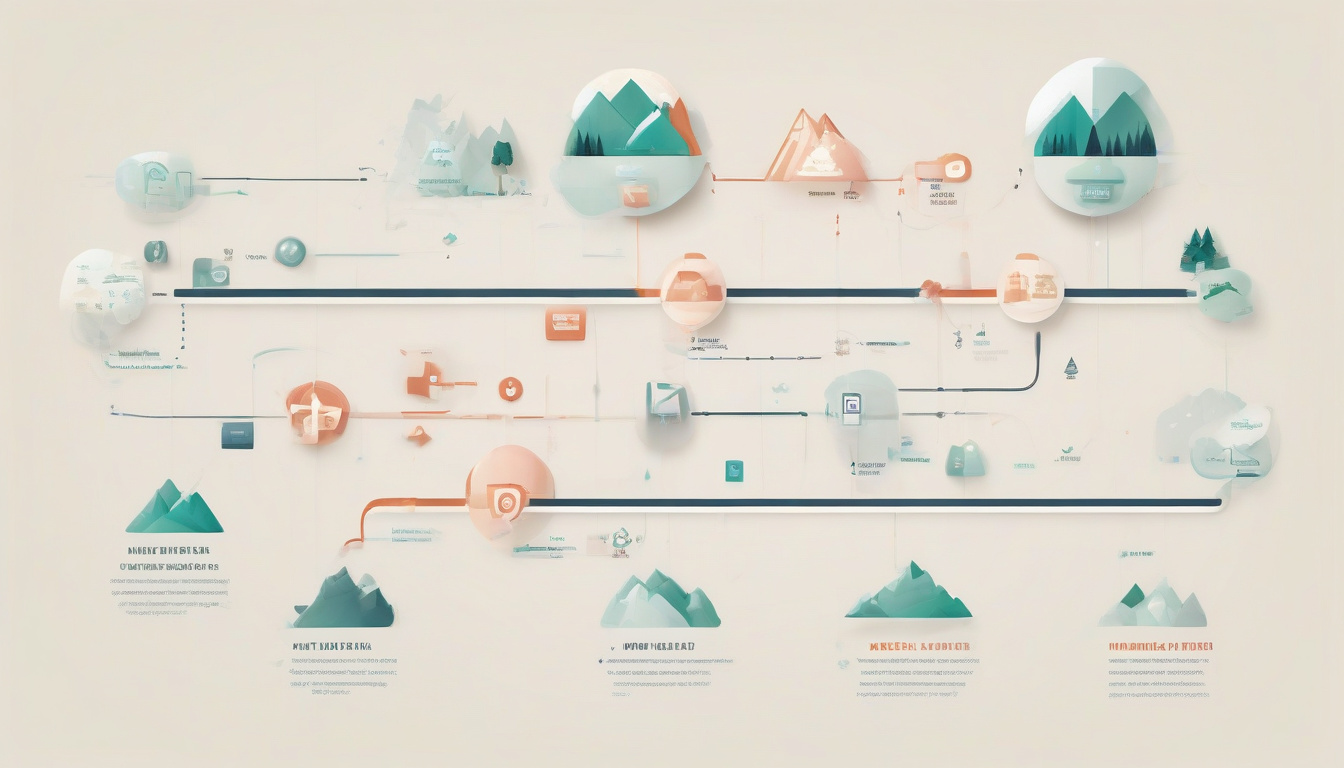In today’s fast-paced financial landscape, managing debt can feel overwhelming, especially when faced with mounting bills and creditors at your doorstep. IVA debt management presents a viable path for those seeking relief from unmanageable financial obligations. In this comprehensive guide, we’ll delve into what an IVA (Individual Voluntary Arrangement) entails, how it functions, and why it may be the solution you’ve been searching for. You’ll discover the significant benefits of selecting an IVA for debt relief, familiarize yourself with the step-by-step application process, and address common challenges that may arise during your journey. Additionally, we’ll explore practical strategies to ensure your long-term financial success post-IVA. Whether you’re just starting to explore your options or are already on the path to debt resolution, this guide will empower you with the knowledge to master IVA debt management and steer you toward a brighter, debt-free future.

Key Takeaways
- IVA debt management is a legally binding agreement that helps individuals reduce their debt.
- Choosing an IVA can lead to significant benefits such as lower monthly payments and legal protection from creditors.
- The application process for an IVA involves several steps, including assessment of your finances and negotiations with creditors.
- Common challenges in IVA debt management can be overcome with proper guidance and support from professionals.
- Achieving long-term financial success after an IVA requires ongoing budgeting and smart financial planning.
Understanding IVA Debt Management: What It Is and How It Works
IVA debt management, or Individual Voluntary Arrangement debt management, is a formal agreement between an individual and their creditors that seeks to help manage and repay debts in a structured way. When dealing with significant financial burdens, often resulting from multiple loans, credit card debts, or unexpected financial hardships, individuals may find themselves overwhelmed with creditor demands. An IVA allows individuals in the UK to come up with a repayment plan that is approved by creditors, usually lasting between three to five years. This option is particularly attractive as it not only manages debt but also provides a legally binding solution, which means that once agreed upon, creditors cannot pursue further action to collect the debt. The process starts with an assessment by a licensed insolvency practitioner who helps determine an affordable monthly repayment based on the individual’s income and expenditure. Throughout the IVA term, any remaining debt is often written off, giving individuals a fresh financial start. Engaging in IVA debt management can offer significant relief and structure for those facing overwhelming debts, allowing them to regain control of their finances.
The Benefits of Choosing an IVA for Debt Relief
The decision to choose an IVA (Individual Voluntary Arrangement) for debt relief can often lead to a plethora of benefits for individuals overwhelmed by financial burdens. One of the primary advantages is the flexibility it offers; unlike traditional bankruptcy, an IVA allows individuals to repay their debts over a period of time—usually five years—affording them the opportunity to manage their finances more effectively. This structured approach not only provides a clear path toward becoming debt-free but also helps in maintaining a sense of control over one’s financial situation. Additionally, an IVA can protect valuable assets such as a home or vehicle from being repossessed, which is a significant concern for many. Furthermore, individuals who choose IVA debt management do so with the assurance that their creditors are legally obligated to adhere to the repayment plan, meaning they can avoid further harassment or legal action. Lastly, successful completion of the IVA can lead to improved credit ratings over time, allowing individuals to rebuild their financial profiles and regain their confidence while planning for a more stable financial future.
‘The greatest weapon against stress is our ability to choose one thought over another.’ – William James

The IVA Application Process: Step-by-Step Guide
### The IVA Application Process: Step-by-Step Guide
When navigating financial difficulties, many people in the UK consider an Individual Voluntary Arrangement (IVA) as a potential solution for managing their debts. An IVA is a formal agreement between you and your creditors to pay back your debts at a manageable rate, often leading to a significant reduction in overall repayment amounts. Here’s a comprehensive breakdown of the IVA application process, to guide you step by step through this crucial financial decision.
#### Step 1: Understanding Your Debt Situation
Before applying for an IVA, it’s essential to have a clear understanding of your financial situation. Calculate your total debts and assess your monthly income and essential expenditures. This will help you determine if an IVA is the right choice and whether you can commit to the repayment plan. This initial analysis is crucial, as it sets the stage for the rest of the application process.
#### Step 2: Seek Professional Advice
Consulting with a qualified debt advisor or licensed insolvency practitioner is vital. They can provide guidance tailored to your specific situation and help you evaluate whether an IVA or alternatives such as bankruptcy or a Debt Management Plan (DMP) may be more suitable. Their expertise also ensures you’re aware of the implications of entering into an IVA, which can have lasting effects on your credit rating and financial standing.
#### Step 3: Completing the IVA Proposal
Once you’ve decided to proceed with an IVA, your advisor will assist you in preparing a formal proposal. This document outlines your financial situation, including income, expenses, debts, and the proposed repayment schedule. It is crucial to be as accurate and transparent as possible, as inaccuracies can lead to complications later. The proposal will show creditors what you can realistically afford to pay and may include a portion of your debt being written off after a designated period.
#### Step 4: Voting on the Proposal
After submitting your proposal, it will be sent to your creditors, who will then vote on whether to accept or reject the plan. A majority (75% by value) of creditors must agree to the terms for the IVA to be approved. It’s worth noting that even if not all creditors agree, the IVA can still be upheld, provided the majority supports it. This stage can be nerve-wracking, but it’s an opportunity for you to work collaboratively with creditors to propose a feasible system for debt management.
#### Step 5: Managing Your IVA
If your proposal is approved, you’ll begin making the agreed payments to your IVA. These will be distributed to creditors by your Insolvency Practitioner. During this period, it’s critical to adhere strictly to the terms of the IVA. This includes making all payments on time and avoiding taking on any new debt without approval. It is also advisable to maintain regular contact with your advisor to ensure everything is running smoothly and to address any potential issues before they escalate.
#### Conclusion
The IVA application process might seem daunting, but understanding these steps can simplify your journey towards financial recovery. Make sure to arm yourself with the right information and support to navigate your IVA effectively, turning your financial challenges into manageable, future opportunities.
Common Challenges and Solutions in IVA Debt Management
# Common Challenges and Solutions in IVA Debt Management
Managing debt through an Individual Voluntary Arrangement (IVA) can be a beneficial way to regain control of your finances. However, it is not without its challenges. Understanding these common obstacles and their solutions is crucial for anyone considering or currently in an IVA. Here are some frequent challenges faced in IVA debt management and practical strategies to overcome them.
##
1. Understanding the IVA Process
### The Complexity of IVA Setup
Many individuals struggle to fully grasp the intricacies of setting up an IVA. The paperwork can seem overwhelming, and the legal jargon often confuses potential applicants.
Solution:
Engaging with a qualified insolvency practitioner can demystify the process. They can guide you through each step, ensuring you understand what to expect and what is required of you as a debtor.
##
2. Monthly Payment Affordability
One of the most significant challenges in IVA debt management is ensuring that your monthly payments are sustainable. Sometimes, the agreed payment amounts can strain one’s financial resources, making it difficult to meet other essential expenses.
Solution:
Before finalizing your IVA, it is important to negotiate a payment plan that takes into account your living expenses and financial situation. Regular reviews of your financial situation can also help identify if adjustments are necessary.
##
3. Ongoing Monitoring and Compliance
Being in an IVA requires ongoing compliance with its terms, including making regular payments and providing updates about your finances. Failure to comply can lead to your IVA being terminated, which may result in further financial distress.
Solution:
Set reminders and use budgeting tools to help keep track of your progress and payment schedule. Additionally, maintain open communication with your insolvency practitioner to ensure that you are on the right track and to discuss any potential issues early on.
##
4. Potential Impact on Credit Rating
While an IVA can help manage debt, it can also significantly affect your credit rating. After entering an IVA, it remains on your credit report for six years, making future borrowing more challenging.
Solution:
Focus on building a positive credit history after your IVA is completed. Start with small secure credit options, like a secured card or a credit-builder loan, to gradually improve your score while managing your debts responsibly, post-IVA.
##
5. Dealing with Creditors and Communication
Throughout the IVA process, ongoing communication with creditors is a must. However, many individuals find it daunting to engage with creditors or feel uncomfortable discussing their financial hardships.
Solution:
Preparing a clear summary of your financial situation can help facilitate these conversations. Remember, creditors often prefer communication, as it indicates a willingness to resolve the debt, which may lead to more cooperative behavior on their part.
## Conclusion
Understanding and addressing these challenges can significantly ease the process of IVA debt management. By staying proactive, seeking professional advice, and maintaining an open line of communication, debtors can navigate their IVAs more effectively and work towards a debt-free future.

Achieving Financial Freedom Post-IVA: Tips for Long-Term Success
Achieving financial freedom after entering an Individual Voluntary Arrangement (IVA) can be challenging but is certainly attainable with the right strategies in place. Here are some practical tips for long-term success in managing your finances post-IVA:
###
1. Create a New Budget
Establishing a new budget should be your first step. Once the IVA concludes, assess your income and expenses to create a realistic budget that accommodates both your living needs and any remaining debt obligations. Allocate funds for savings, emergencies, and discretionary spending, ensuring that you don’t fall back into unhealthy financial habits.
###
2. Build An Emergency Fund
An emergency fund acts as a financial cushion in unexpected situations. Aim to save at least three to six months’ worth of living expenses in a separate savings account. This fund can prevent the need for borrowing or falling back into debt during difficult times.
###
3. Focus on Improving Your Credit Score
Post-IVA, it’s crucial to work on improving your credit score. Start by applying for a credit-builder credit card or a secured credit card, making small purchases, and paying them off in full each month. Regularly check your credit report for inaccuracies and work on addressing any negative marks.
###
4. Educate Yourself on Personal Finance
Investing time in learning about personal finance can empower you to make better money decisions. Read books, listen to podcasts, or take online courses focusing on budgeting, investing, and saving strategies. This knowledge will serve you well in managing your finances responsibly.
###
5. Seek Professional Advice
Don’t hesitate to consult with a financial advisor, especially one experienced in post-IVA financial planning. They can provide tailored advice on investments, savings plans, and retirement accounts, helping you build a strong financial future.
###
6. Maintain Your Financial Discipline
Adhering to discipline is crucial in your journey towards financial freedom. Resist the temptation to overspend, and stick to your budget. Cultivate habits such as regular savings and mindful spending to secure your financial health.
### Conclusion
Achieving financial freedom after successfully navigating an IVA is about setting up a solid foundation through smart budgeting, building an emergency fund, and continually educating yourself. By following these tips, you can lay the groundwork for a secure future free from the constraints of debt.
Frequently Asked Questions
What is IVA debt management?
IVA (Individual Voluntary Arrangement) debt management is a formal agreement between you and your creditors to pay back a portion of your debts over a set period, usually five to six years, instead of making full payments. It offers a way to manage your debts while preventing creditors from taking further action.
What are the benefits of choosing an IVA for debt relief?
The benefits of choosing an IVA include protection from creditor actions such as bankruptcy claims, reduced monthly payments based on your financial situation, and the ability to write off a portion of your unsecured debts after completing the arrangement. It also allows you to maintain a better control over your finances.
How can I apply for an IVA?
To apply for an IVA, you need to consult with an insolvency practitioner who will assess your financial situation. They will help you prepare a proposal to present to your creditors. The process includes gathering information about your debts, income, and expenses, and then submitting the proposal for approval.
What are the common challenges faced in IVA debt management?
Common challenges in IVA debt management can include changes in financial circumstances that affect your ability to make payments, disagreements with creditors, or lack of understanding of the terms. Solutions often involve open communication with your insolvency practitioner and potentially re-negotiating the terms of your IVA.
How can I achieve financial freedom after completing my IVA?
Achieving financial freedom post-IVA involves budgeting effectively, continuing to save, rebuilding your credit score, and avoiding taking on further unmanageable debt. Establishing good financial habits and seeking advice can help you maintain your financial stability for the long term.
